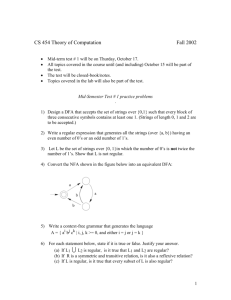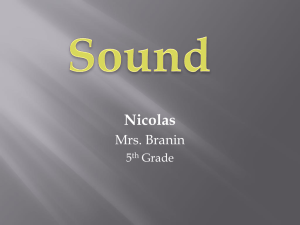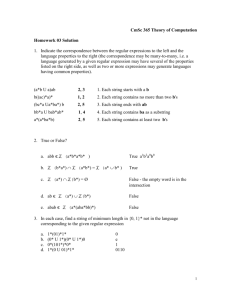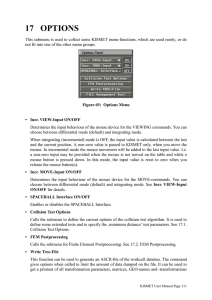File
advertisement
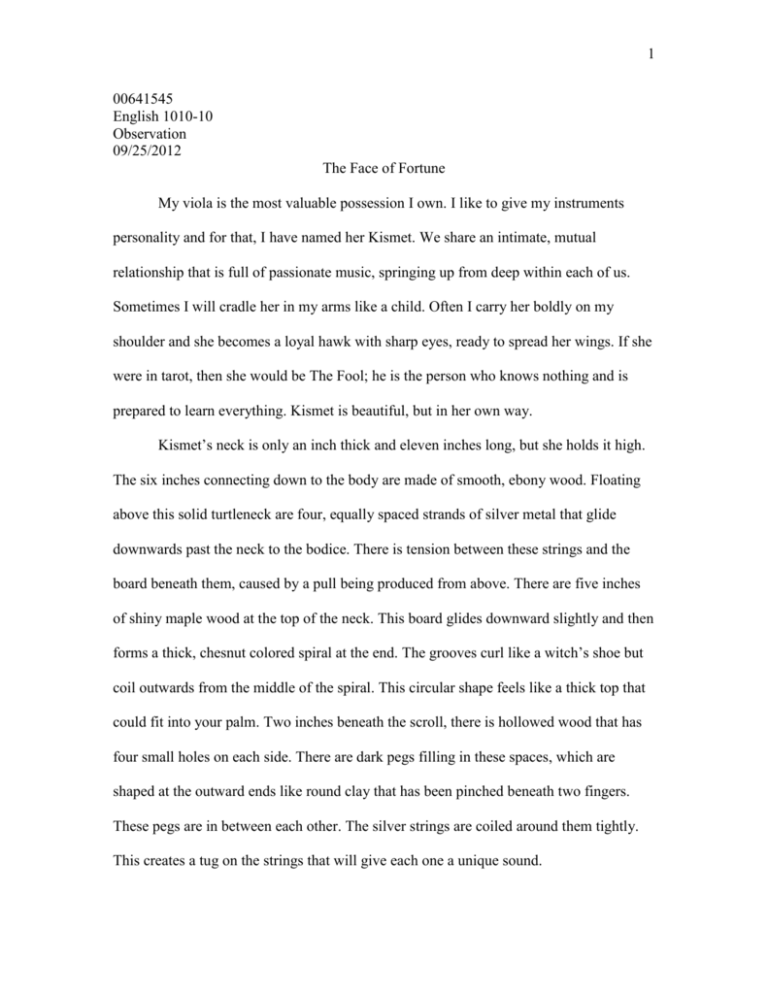
1 00641545 English 1010-10 Observation 09/25/2012 The Face of Fortune My viola is the most valuable possession I own. I like to give my instruments personality and for that, I have named her Kismet. We share an intimate, mutual relationship that is full of passionate music, springing up from deep within each of us. Sometimes I will cradle her in my arms like a child. Often I carry her boldly on my shoulder and she becomes a loyal hawk with sharp eyes, ready to spread her wings. If she were in tarot, then she would be The Fool; he is the person who knows nothing and is prepared to learn everything. Kismet is beautiful, but in her own way. Kismet’s neck is only an inch thick and eleven inches long, but she holds it high. The six inches connecting down to the body are made of smooth, ebony wood. Floating above this solid turtleneck are four, equally spaced strands of silver metal that glide downwards past the neck to the bodice. There is tension between these strings and the board beneath them, caused by a pull being produced from above. There are five inches of shiny maple wood at the top of the neck. This board glides downward slightly and then forms a thick, chesnut colored spiral at the end. The grooves curl like a witch’s shoe but coil outwards from the middle of the spiral. This circular shape feels like a thick top that could fit into your palm. Two inches beneath the scroll, there is hollowed wood that has four small holes on each side. There are dark pegs filling in these spaces, which are shaped at the outward ends like round clay that has been pinched beneath two fingers. These pegs are in between each other. The silver strings are coiled around them tightly. This creates a tug on the strings that will give each one a unique sound. 2 Despite all other features, your main attention will be brought to Kismet’s body. Her frame is curvy and well supported, yet delicate. It is completely hollowed out from the inside to make room for music to flow outwards freely. Kismet is sixteen inches long, nine inches wide and one inch thick. She is made of maple wood that creates a mahogany-colored glow. When she is polished, her body gleams with white streaks and smiles of light. Women would beg for her alluring, oval shape, with concave curves at her middle similar to an hourglass waist. These curves jut out slightly into points to amplify their shape. Slightly beneath her waist and on her stomach are two spaces carved out like an elongated letter S, each facing the middle. These mouths will allow the sound to escape from her center. When you turn her around, you will see a straight line down her back with mismatching horizontal stripes of auburn on each side. This is where two sheets of wood have been glued together smoothly to complete her harmonious form. Unlike a person’s features, Kismet’s face is beneath the neck and in the center of her torso. The silver from her neck falls straight down her body. They cross the long ebony plank until they get to the beginning of the concave waist. There, the plank stops and the strings float in the air for about an inch and a half. Beyond that, the strings land onto a thin, curved rectangle of wood that acts as a horizontal bridge to support them. The bridge has holes carved into it that resemble a tiny heart. This area is where the music will be played either by plucking the strings, or by gliding waxy hairs across them to create a continuous river of notes. Moving past the bridge an inch further, the strings fall into small spaces where they are held tightly in place. Below these spaces, four round screws are in a row below each string. The screws are used to fine tune the strings after the pegs have already been turned. The strings and screws are atop a coal black board 3 which is shaped like a wide mouthed vase. The board is an inch thick and it becomes slender as it moves downwards. The stem of the board clings to one more slice of wood of the same color, a two inch, flat oval disc in a teardrop shape. This gentle platform is where my chin rests when we play music together. When the evening of a concert arrives, I place my partner onto my shoulder and carefully hold onto her neck, my fingers spread out across the strings. From right to left on the fingerboard, the strings are A, D, G and C. I use them to blend in with the orchestra and create a balanced sound. I press my fingers down on the strings and play changing notes. I use a bow to play melodies. The bow is a thin pole that is two feet long. Tightened horse hairs are connected to it; I place them on the strings and tug the bow downwards. The vibration of the strings creates a sound that moves through Kismet’s twin mouths, shaking her body before flowing outwards again towards the audience. I fill with awe when I hear the song she cries. When the music is over and the night draws to a close, I place her inside her case. I cover her with a blanket of velvet cloth. I slowly close the lid. Kismet will rest there peacefully, waiting until the arrival of the next symphony.




